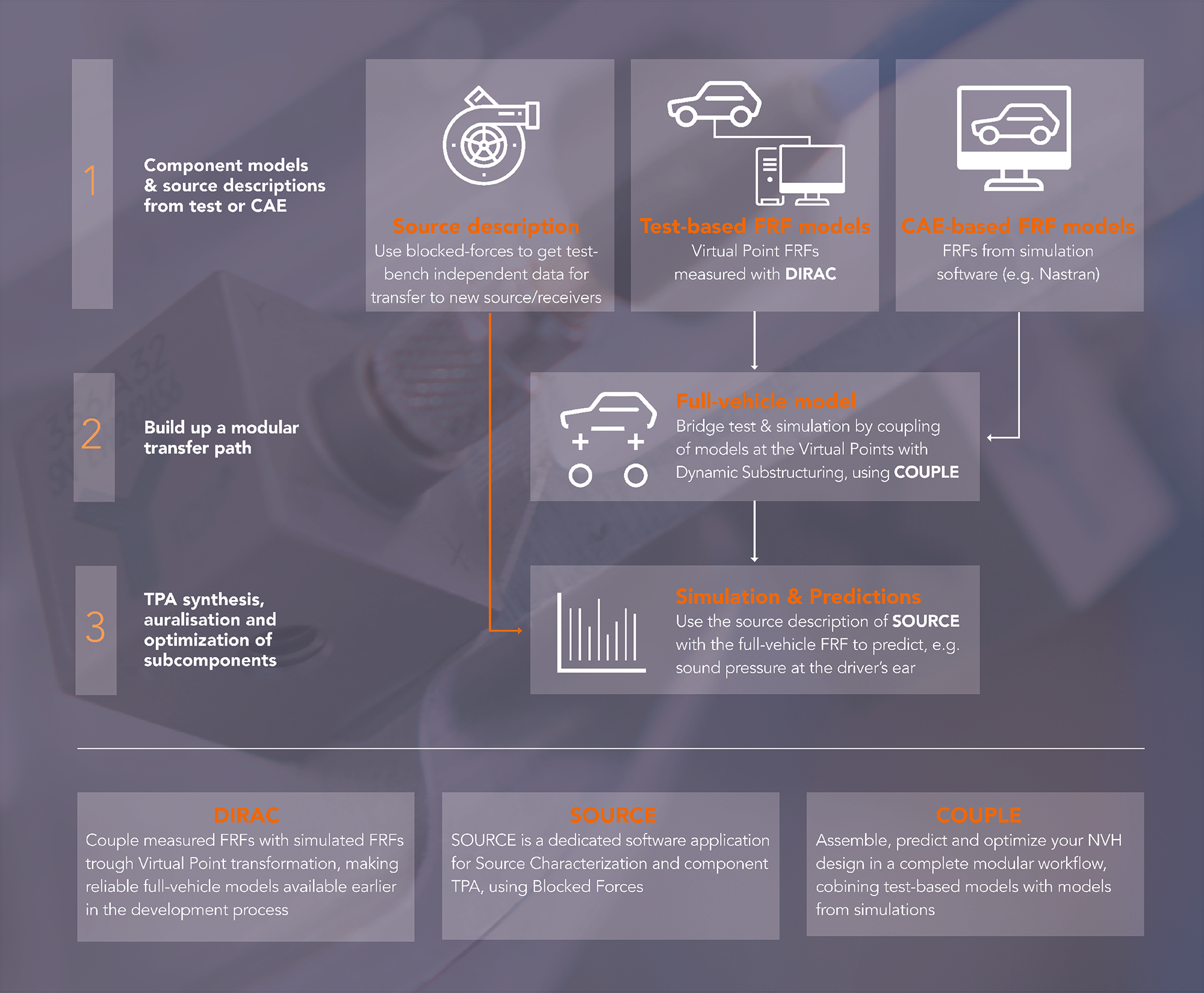Use case
Hybrid Modular Engineering Workflows for Vehicle Manufacturers
In today’s highly competitive market, controlling engine/motor and structural vibrations is essential. Driver and passenger comfort, Ride & Handling, and reliability/durability are key, as well as multi-attribute optimization. Traditional methods for noise and vibration prediction are often time-intensive and insufficiently accurate, and may not prevent late-stage design issues.
To address this issue, we have developed our solution: Hybrid Modular Engineering, combining test data and CAE at the component level, and then assembling modules to predict system NVH early.
The Hybrid Modular Engineering Approach
Increased NVH measurement accuracy
Applying VIBES solutions and software considerably increases NVH-data accuracy compared to the industry standard and reduces unusable data by 60%. This provides engineers with data accuracy for further processing.
Combined test & simulation-based models
VIBES software users can break complex systems down into parts to for separate & accurate modelling: test-based models for complex parts, and numerical models for simple parts. This hybrid approach results in an assembly suitable for highly accurate NVH-analysis.
Avoiding troubleshooting at late stages
Unlike legacy measurement systems, the quality checks in VIBES software provides users direct insight into the quality of their test-based models. By integrating these checks in their measurement routine, problems are addressed early.
Enabling early NVH behaviour prediction
With VIBES software, you can already see NVH performance during the design phase. By combining test-based and numerical-based models, you can get a highly accurate NVH analysis before prototyping, allowing early-stage trouble shooting and timely product launch.
Step 1
Accurately characterize an active component/subsystem
- Using VIBES software, you can test a vibration source (engine, e-motor, separate or combined with a gearbox, subframe, or mount system), on a rig.
- From these rig tests, VIBES derives Blocked Forces (unique and highly accurate characterization of source strength, independent of the receiver).
Step 2
Use the Blocked Forces as a virtual source for your CAE model
You can then:
- Option 1: import the Blocked Forces into your CAE system (Nastran, Optistruct, etc.) and virtually couple these loads with your CAE body model
- Option 2: import your CAE body model into VIBES software and virtually couple the Blocked Forces with your CAE body model
Result: full-vehicle NVH prediction without the need for a full prototype.
Step 3
Further improve model accuracy by including test-based models
- For complex parts, that are difficult to model through CAE, you can make test-based models using comparable parts or predecessors with VIBES software
- Also using VIBES software, you combine these test-based models with CAE model and apply the Blocked Forces,for highly accurate full-vehicle NVH predictions without the need for a full prototype
See workflows with VIBES software

